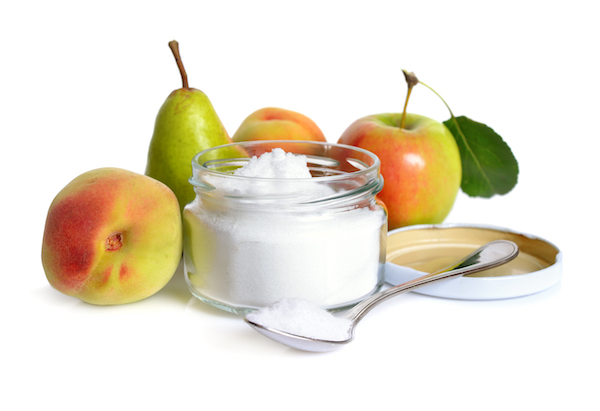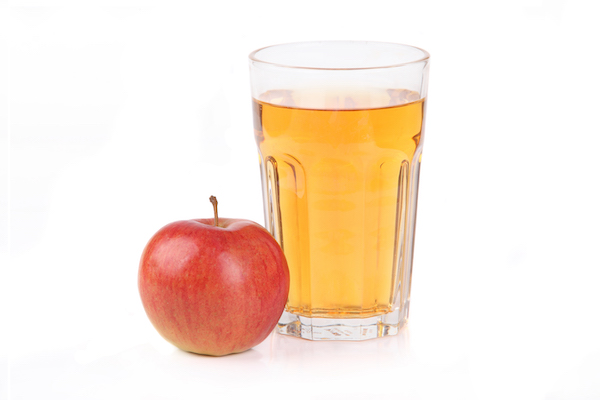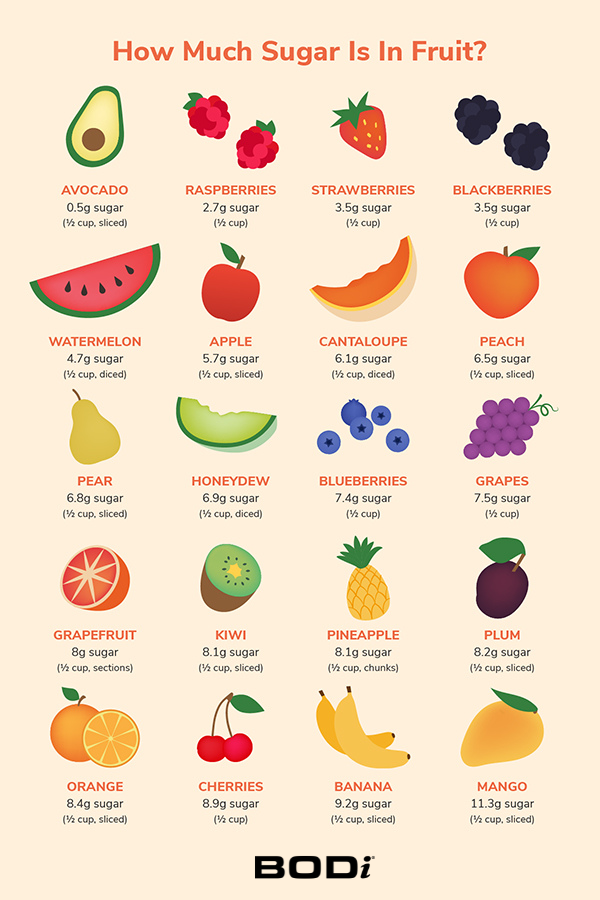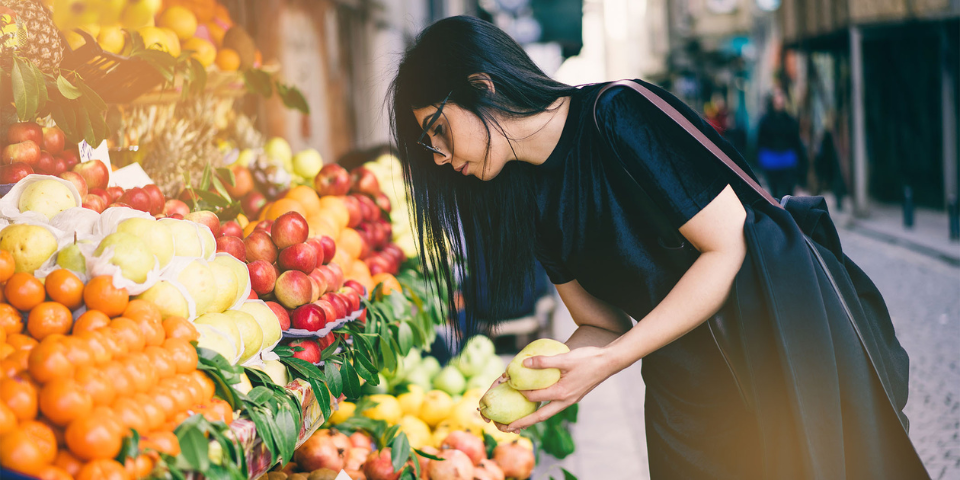Fruits are called nature’s candy for a reason: They are our largest source of sugar in minimally processed whole foods. So when the low-carb diet gained popularity, fruit came under scrutiny by scrupulous dieters looking for a nutritional edge. We know fruit is a good source of valuable vitamins and minerals, but many people wonder: Is the sugar in fruit bad for you?
Read on to get a better understanding of the sugar in your fruit and whether not it might be a concern for you.
Is Sugar in Fruit Bad for You?
In short, no, you probably shouldn’t eliminate that daily banana. Experts do want you to consume less sugar, but you should strive to slash added sugar, not the naturally occurring sugars from fruit and dairy. That’s because natural sugars also contain fiber, which slows down your body’s absorption of that sugar and therefore helps balance blood sugar levels.
Instead of axing fruit, try cutting down on sugary beverages such as sodas, lattes, energy drinks, and sports drinks, as well as refined carbohydrates such as cookies, cakes, and candies. Compared to some of these sugar bombs, fruit’s sugar content doesn’t come close — and it’s real, nutritionally superior food.
However, moderation is key because the sugar in fruit is still sugar.
Can You Eat Too Much Sugar from Fruit?

Sometimes. Naturally occurring sugar in fruit is better than refined sugar, but it’s still possible to overdo it: “For people who have a strong sugar addiction, or who want to lose weight, you can actually overindulge in [fruit] if you’re eating them all day long,” says Keri Glassman, MS, RD, CDN.
Researchers like Dr. Robert Lustig associate fructose to “alcohol without the buzz.” The basic argument: Glucose can be used by any tissue in the body, but only the liver is responsible for processing fructose, which, remember, is the main source of sugar in fruit.
When faced with fructose, the liver has two choices: It can convert fructose into glucose to fuel other tissues, or it can convert the fructose into fat and store it. If you regularly eat more than enough calories, guess what choice your liver makes? That’s right: It’ll store excess fructose as fat.
This isn’t good because over time, this fat can accumulate in the liver and drive up your risk for insulin resistance and type 2 diabetes.
Is Sugar in Fruit the Same as Regular Sugar?
The sticky sweetness you enjoy from a crisp apple comes from fructose, the main (but not the only) sugar in fruits. Fruits contain a combination of sugars — for example, an apple contains 6 percent fructose and 3 percent sucrose by weight. Sucrose is what we commonly know as table sugar, and it’s made up of fructose and glucose units (molecules) joined together.
Once eaten, you can digest both sucrose and fructose into glucose, which your brain and body uses as fuel — and glucose is what ends up in your bloodstream and raises your blood sugar. While sucrose can be quickly digested into glucose to spike blood sugar, fructose is more complicated.
Pure fructose doesn’t raise blood sugar very much, making it a popular sweetener for diabetics. Of course, that doesn’t give it a free pass.
When Should You Avoid Eating Fruit?

The evidence against fructose collected by well-intentioned researchers like Dr. Lustig is partly why you may encounter sugar-phobic folks. But keep in mind that even Dr. Lustig, who goes on record calling sugar “toxic,” told the New York Times he wouldn’t advise cutting out fruit.
Basically, if you’re concerned about your sugar intake, you may want to consider avoiding fruit when it’s been highly processed — that apple juice isn’t the same as eating an apple, and you may not be getting the same ratio of beneficial fiber compared to the apple.
Also, be wary of dried fruit. Dried fruit does contain fiber, but at a much lower volume, which makes overeating a more likely prospect.
How Much Sugar Is in Fruit?
Still interested in reaching for lower-sugar fruits? Here’s a chart to help you understand how much sugar is in 20 popular fruits:
*Chart displayed from least sugar to most sugar by grams.
| Fruit | Weight | Cals | Carbs | Fiber | Sugar* | % sugar by weight |
| Avocado (½ cup, sliced) | 73 g | 117 | 6.2 g | 4.9 g | 0.5 g | 1% |
| Raspberries (½ cup) | 61.5 g | 32 | 7.3 g | 4 g | 2.7 g | 4% |
| Strawberries (½ cup) | 72 g | 23 | 5.5 g | 1.4 g | 3.5 g | 5% |
| Blackberries (½ cup) | 72 g | 31 | 6.9 g | 3.8 g | 3.5 g | 5% |
| Watermelon (½ cup, diced) | 76 g | 23 | 5.7 g | 0.3 g | 4.7 g | 6% |
| Apple (½ cup, sliced) | 54.5 g | 28 | 7.5 g | 1.3 g | 5.7 g | 10% |
| Cantaloupe (½ cup, diced) | 78 g | 27 | 6.4 g | 0.7 g | 6.1 g | 8% |
| Peach (½ cup, sliced) | 77 g | 30 | 7.4 g | 1.2 g | 6.5 g | 8% |
| Pear (½ cup, sliced) | 70 g | 40 | 10.7 g | 2.2 g | 6.8 g | 10% |
| Honeydew (½ cup, diced) | 85 g | 31 | 7.7 g | 0.7 g | 6.9 g | 8% |
| Blueberries (½ cup) | 74 g | 42 | 10.7 g | 1.8 g | 7.4 g | 10% |
| Grapes (½ cup) | 46 g | 31 | 7.9 g | 0.4 g | 7.5 g | 16% |
| Grapefruit (½ cup, sections) | 115 g | 37 | 9.3 g | 1.3 g | 8 g | 7% |
| Kiwi (½ cup, sliced) | 90 g | 55 | 13.2 g | 2.7 g | 8.1 g | 9% |
| Pineapple (½ cup, chunks) | 82.5 g | 41 | 10.8 g | 1.2 g | 8.1 g | 10% |
| Plum (½ cup, sliced) | 82.5 g | 38 | 9.4 g | 1.2 g | 8.2 g | 10% |
| Orange (½ cup, sliced) | 90 g | 42 | 10.6 g | 2.2 g | 8.4 g | 9% |
| Cherries (½ cup) | 69 g | 43 | 11 g | 1.4 g | 8.9 g | 13% |
| Banana (½ cup, sliced) | 75 g | 67 | 17.1 g | 2 g | 9.2 g | 12% |
| Mango (½ cup, sliced) | 82.5 g | 50 | 12.4 g | 1.3 g | 11.3 g | 14% |


